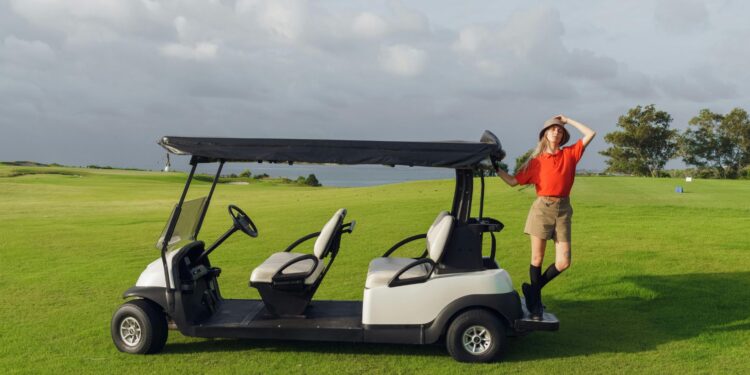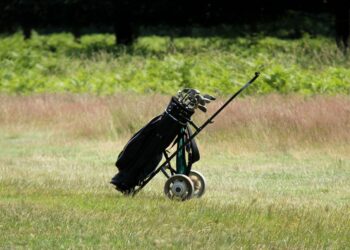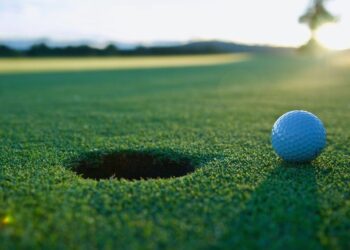Golf is a sport beloved by millions around the world. It allows players to engage in physical activity, spend time outdoors, and enjoy the aesthetics of designer courses. However, the maintenance and operation of golf courses have a sizable impact on the environment. As a result, many golf courses and players are making efforts to make the sport more environmentally friendly. This article will explore ways in which golf clubs and enthusiasts can contribute to a healthier planet while continuing to enjoy their favorite pastimes. From sustainable course management practices to lithium golf cart batteries, there are numerous opportunities for golfers to reduce their footprint.
Eco-Friendly Golf Equipment
Battery Upgrades
Unlike the lead-acid batteries used in many older golf carts, lithium-ion batteries from www.alliedlithium.com are lighter, more efficient, and have a longer lifespan—which means they generate less waste. They also offer the advantage of faster charging times and can maintain a consistent power output throughout their charge cycle, ensuring reliable performance on the golf course. Additionally, the reduced weight of lithium batteries can lead to less wear and tear on the golf course itself.
Sustainable Manufacturing
Golf equipment manufacturers can contribute to sustainability by using eco-friendly materials. For instance, golf clubs can be made from recycled metals and sustainable woods, while golf balls can incorporate biodegradable materials to minimize their impact if lost in the environment. Apparel manufacturers are turning to organic cotton, bamboo fibers, and recycled polyester, reducing reliance on virgin materials and decreasing the overall carbon footprint.
Equipment Sharing and Recycling
Encouraging the sharing and recycling of golf equipment can reduce waste and resource use as well. Golf clubs can implement rental programs where golfers can use high-quality equipment without the need for personal ownership or set up collection programs in partnerships with recycling companies that specialize in repurposing sports equipment. Similarly, there are many community-led initiatives and websites that facilitate the exchange of secondhand gear among players.
Golf Course Design and Maintenance
Sustainable Landscaping
Golf courses are known for their vast, manicured greens. Sustainable landscaping focuses on creating a balance between the sport and the natural environment.

The design of a sustainable golf course includes preserving natural habitats and biodiversity, incorporating features like natural wetlands—which not only provide a challenging terrain for golfers but also serve as vital ecosystems for local wildlife. In addition, using native plants and grasses can significantly reduce the course’s water consumption and chemical usage.
Water Conservation
Water conservation involves implementing advanced irrigation systems that use weather data and soil moisture sensors to efficiently water the course, minimizing water wastage. Another key strategy is the collection and use of reclaimed or rainwater for irrigation purposes, which eases the strain on local water resources. Golf courses can also design their landscapes to maximize natural rainwater absorption and minimize runoff, further contributing to water conservation.
Organic Maintenance
Although maintaining the aesthetics of the course is crucial, reducing the use of chemical fertilizers and pesticides is just as important. Using organic fertilizers and compost on the turf enhances soil quality and reduces harmful runoff. At the same time, integrated pest management strategies, such as biological control methods, habitat manipulation, and the use of naturally derived pesticides, can help manage pests without poisoning neighboring ecosystems.
Renewable Energy
By harnessing solar, wind, or geothermal energy, golf facilities can greatly reduce their reliance on fossil fuels, thereby decreasing their carbon footprint.

For example, solar panels can be installed on clubhouse roofs or across non-playable areas of the course, providing a clean and efficient power source for the club’s operations. Wind turbines, where feasible, can also contribute to a course’s energy needs, particularly in wind-prone regions. Additionally, the use of geothermal energy for heating and cooling the clubhouse and other facilities can further enhance energy efficiency.
Promoting Environmental Awareness
Education and Awareness Programs
Education and awareness initiatives should be implemented to educate golfers and course staff about sustainable practices. This can be achieved through workshops, informational signage around the course, and resources in clubhouses that highlight key topics like water conservation. Additionally, programs can include instruction on how golfers can minimize their environmental footprint, such as following the ‘leave no trace‘ principles and respecting the ecological significance of the course’s natural areas.
Walking the Course
Finally, encouraging golfers to walk the course instead of using golf carts can have a significant impact. This practice benefits the environment by lessening the reliance on fossil fuels and reducing tire wear and tear on the course. Furthermore, walking a full golf course is an excellent exercise for players, improving cardiovascular health and burning calories. Walking also allows players to fully immerse themselves in the natural beauty of their surroundings, fostering a deeper appreciation for the environment and the game.
Conclusion
Efforts to make golf a more environmentally friendly hobby are underway in many of the top courses around the world. From recycling used golf clubs to using energy-efficient golf cart batteries, every step towards sustainability matters in ensuring the future of the sport and protecting our environment. Therefore, it is crucial for golf enthusiasts, course managers, and equipment manufacturers to continue prioritizing sustainability and advocate for responsible practices. With dedication and determination, we can continue to enjoy this challenging sport while preserving the natural beauty of our planet.









